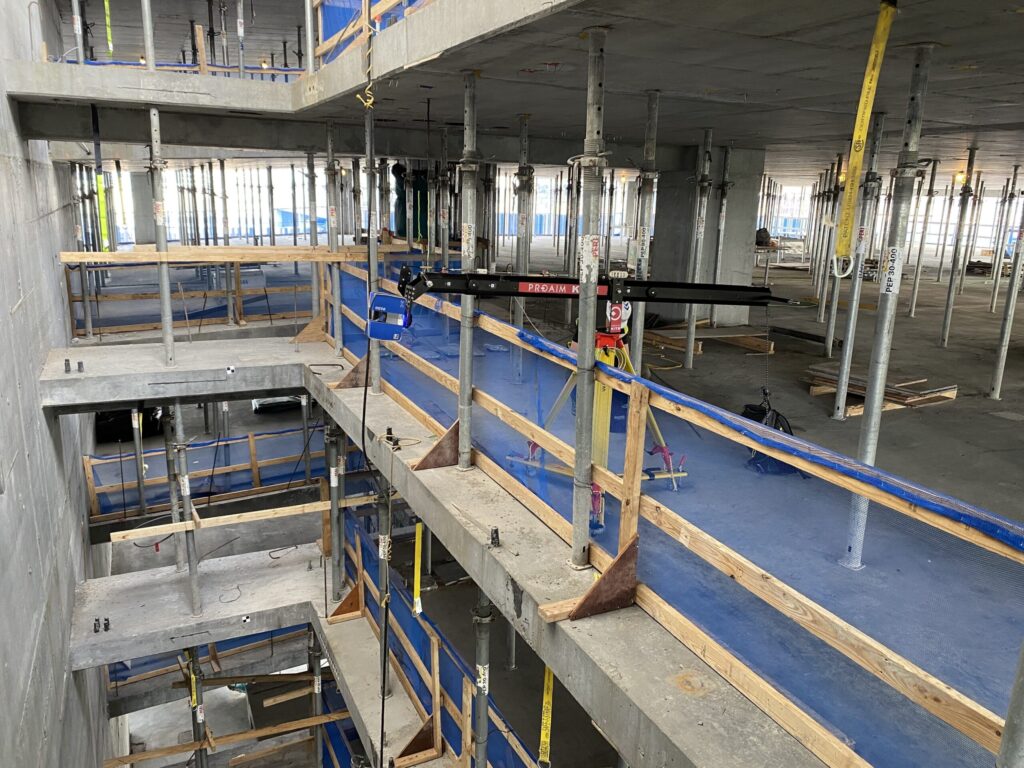- Multifamily
Laser-scanning innovation measures up on the jobsite
April 20, 2023

Laser scanning has long been a useful method for our Innovation & Operational Technology Department. This process measures spaces through millimeter-accurate dimensional data, which allows us to create 3D models for quality assurance and quality control work like making sure components are installed correctly, capturing as-built conditions, and pinpointing discrepancies in the concrete.
The Midtown Union project in Atlanta presented a creative opportunity to take our laser-scanning capabilities to the next level when the project team requested an elevator shaft scan. Having only scanned a stairwell in this manner before, our operational technology team lacked the proper equipment for the task. So they purchased a camera boom—the kind you would find on a film production set—that could hold the scanner out in the middle of the elevator shaft. Using this makeshift method, the safety barricade didn’t have to be removed, and the data-capture process only took a couple minutes for each floor.
After their first successful elevator scanning operation, the operational technology team looked around at other companies’ virtual design teams to see how they typically handle this process. That’s when they realized that they were on to something groundbreaking.

“We talked to some companies with 20-plus years of experience in scanning, and they had never done something like this before,” said Innovation & Operational Technology Specialist Val Lang. “We didn’t realize this tool was going to be as valuable as it is.”
Elevator scanning reduces the amount of time it takes to survey an elevator shaft. The alternative method would be having surveyors on site take measurements at each opening. This not only takes much longer, but it gives you limited data compared to a laser scan, which will capture 100 percent of the area. In fact, our team can visit a jobsite and scan the whole elevator shaft in just one day.
“That laser scan is not going to lie,” said Mack Wheeler, an assistant superintendent on the ONE22ONE job in Nashville, Tennessee. “It’s going to tell you within a 16th of an inch or less how accurate you are. Until you shoot that laser scan, you can’t say you’re within the tolerance, and being able to do that saves you tons of time.”
Our team continues to improve this elevator scanning technology; ideally, the equipment will more closely resemble a hoist or rig rather than a camera boom. Being able to lower the laser scanner straight down through the elevator shaft and take a scan at each floor will make the process even faster and safer. And of course, it’ll continue to present potential cost savings as well.
“This data that we capture in the laser scans is extremely valuable,” Val said. “If we can catch these mistakes early, it’ll mean fewer headaches for everyone.”
Related


